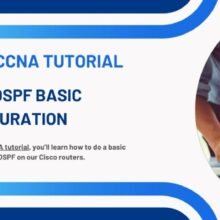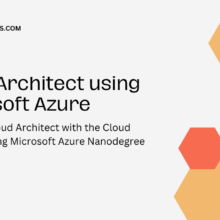Smart Phone Remote Controller ● Widespread Compatibility: Your smartphone can function effectively with the standard connector that is frequently used to replace iOS cellphones.● Plug and Play: Your smartphone may become an…
MongoDB zero foundation from entry to proficiency

MongoDB uses a non-relational database written in C++ language. Features are high performance, easy to deploy, easy to use, and very convenient to store data.
It is a document database with great performance, high availability, and simple scaling. It is a cross-platform document-oriented database system that bridges the gap between key-value and classic RDBMS systems and is categorised as a NoSQL database.
MongoDB is a relatively recent rival in the data storage circle when compared to Oracle and IBM DB2, but its distributed key value store, Map Reduce calculating power, and document focused NoSQL characteristics have attracted a lot of interest. It is the database for Big Data processing because of its features.
MongoDB, an open-source NoSQL database, was just selected “Database Management System of the Year” by DB-Engines, and for good reason: NoSQL databases are more suited for Big Data processing than RDBMS.

Main features:
- For collection storage, it is easy to store object type data
- Free mode
- Support dynamic query
- supports full indexing, including internal objects
- Support replication and failure recovery
- Use efficient binary data storage, including large objects
- The file storage format is BSON (an extension of JSON )
Why Data Scientists should learn MongoDB?
It provides a mechanism to store and retrieve data in relaxed consistency model with advantages like horizontal scaling, higher availability and faster access.
- MongoDB® (from humongous) is reinventing data management and powering Big Data as the world’s fastest-growing database.
- Designed for how we build and run applications today, It empowers organizations to be more agile and scalable.
- It enables new types of applications, better customer experience, faster time to market and lower costs.
[ufwp id=”1906852″]
The main content of this course is as follows:
- What is MongoDB
- MongoDB installation and configuration
- Basic database addition, deletion, modification and check
- type of data
- Relationship performance in NOSQL
- The principle and realization of database index
- aggregation technology
- Database management and security
- Introduction to graphical management tools
What you’ll learn in this course ?
- Learn what document databases are and how data is organized with MongoDB
- Learn how to perform CRUD operations with MongoDB
- Don’t stop at the basics – learn all about writing complex MongoDB queries, in-depth and with practical examples!
- Write efficient and well-performing queries to fetch data in the format you need it
- Use all features MongoDB offers you to work with data efficiently
[ufwp id=”1906852″]
Agile project management Artificial Intelligence aws blockchain cloud computing coding interview coding interviews Collaboration Coursera css cybersecurity cyber threats data analysis data breaches data science data visualization devops django docker excel flask hacking html It Certification java javascript ketan kk Kubernetes machine learning mongoDB Network & Security network protocol nodejs online courses online learning Operating Systems Other It & Software pen testing python Software Engineering Terraform Udemy courses VLAN web development
https://in.pinterest.com/itexamtools/






